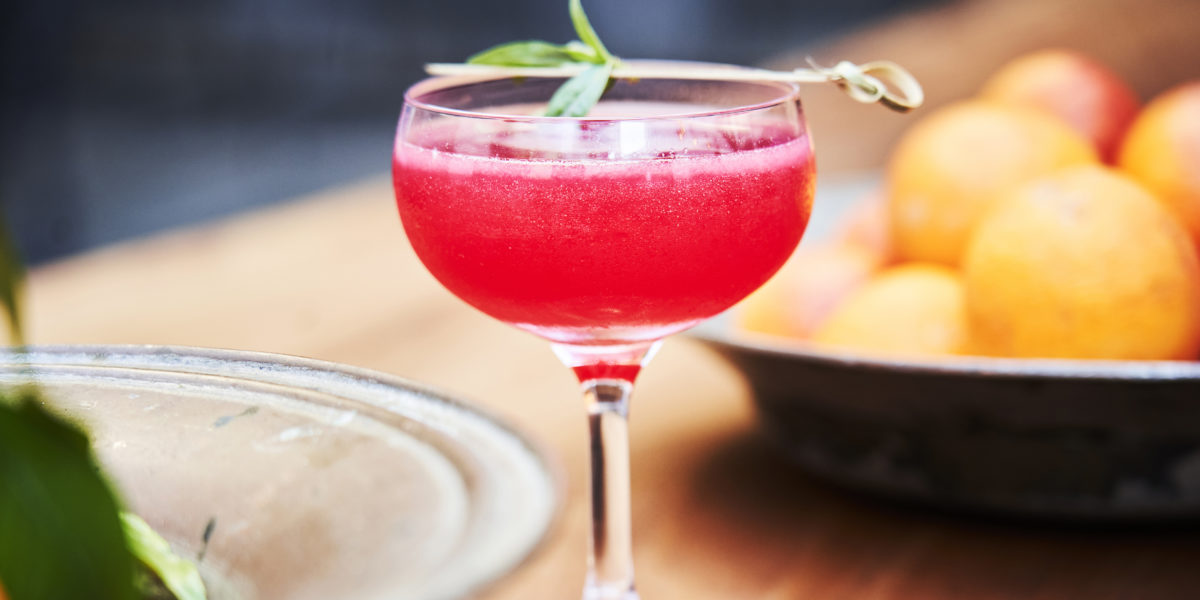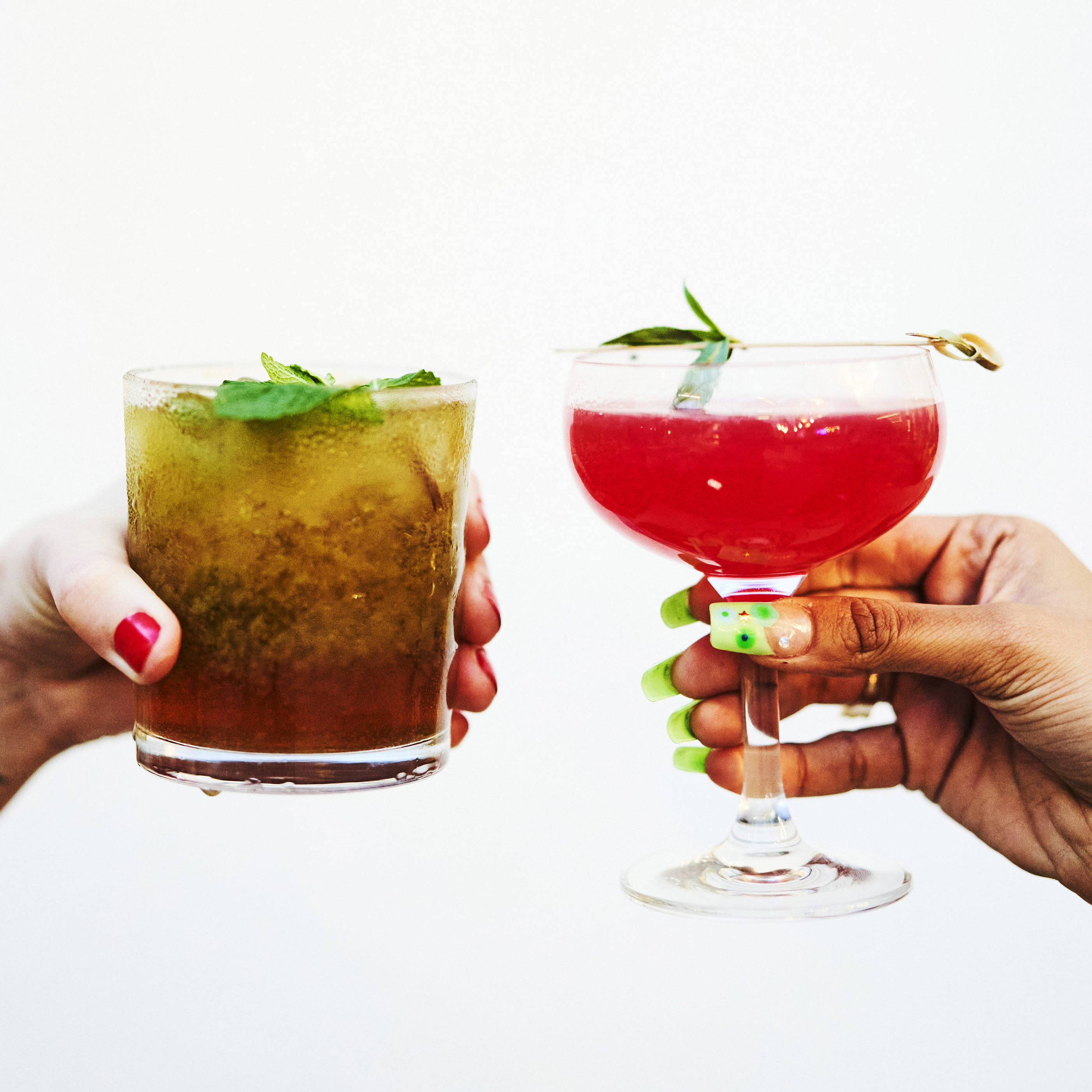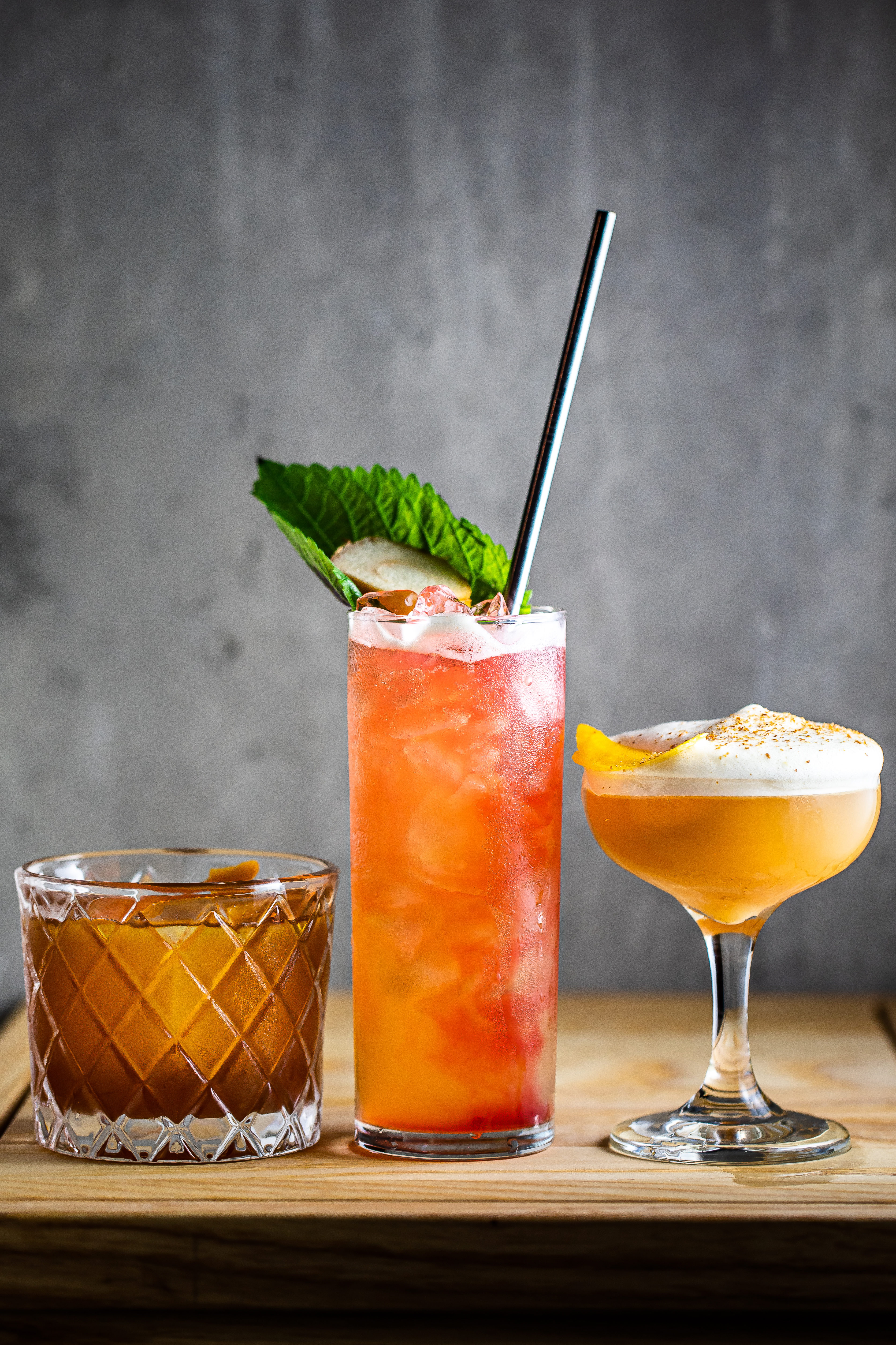It’s Time to Put a (Good) Nonalcoholic Cocktail on Every Restaurant Menu
A deliciously complex—but booze-free—cocktail: Is it too much to ask?

Thomas J. Story
I took self-induced breaks from alcohol before I got sober, so I know what it’s like to dine out both ways: not drinking because I want to, and not drinking because I have to.
That means I’ve looked at a lot of lists and discovered, much to my chagrin, that they’re devoid of the kind of drinks I’d love to sip.
Let me be clear: This is a personal choice, and I’m not looking for pity. But with a growing number of booze-free brands adding botanical breadth to the range of available spirits, I’m of the strong opinion that every restaurant should have at least one good nonalcoholic cocktail on the menu. And by that, I don’t mean a margarita sans tequila—à la lime juice, agave syrup, and club soda served over ice.
I’m talking about one-of-a-kind cocktails that deserve to be savored. I’m talking about cocktails that are worthy of the same price tag as any margarita or Old Fashioned on that same list. I want floral and earthy and herbaceous. I want layered and complex and delicious.

Thomas J. Story
There’s really no excuse: A bevy of Western brands are pioneering this tradition with one-of-a-kind distillates that feature absolutely no alcohol. An aptly named bottle of Smokey from Los Angeles-based Optimist is like mezcal except it’s not. I use it to add a mouthwatering char to at-home concoctions; it’s a perfect pairing for egg-white libations. Popular brand AMASS crafts Riverine with botanicals you might see in gin—coriander, orris root, and juniper, for example—that are begging for complements like honey, cucumber, or mint.
And up in Oregon, Wilderton produces two spirits including the herb-driven Earthen and citrus-focused Lustre, each made with raw botanicals from across the globe. “The broader vision here is to create a new category of spirits that just happens to be nonalcoholic,” says Brad Whiting, Wilderton’s CEO who traveled the globe for 14 years, sourcing spirits for Oregon’s Hood River Distillers. It’s all part of the evolution of modern cocktailing, Whiting adds. While there’s much to be said about the sober-curious movement sweeping the country, Whiting says his broader goals center on “making cocktails more interesting.”
For someone like me, who’s not drinking alcohol, discovering booze-free cocktails on a menu is more than interesting; it’s delightful. Take the Bella Coola at Alice Waters’ new Los Angeles restaurant Lulu in the Hammer Museum, for example. This bright red libation combines AMASS Riverine with lime juice, simple syrup, blood-orange juice, and Broken Clock Vinegar Works Lemon & Mint Shrub. It’s exactly what I want to sip during an early afternoon lunch. Equal parts tart complexity and refreshing zest pair perfectly with the Chez Panisse team’s California classic menu of grilled chicken salads and rosemary potato chips.

Carly Diaz
In Palm Springs, I sipped not one but two nonalcoholic cocktails made by the team behind the bar at one of the hottest restaurants in town, Bar Cecil. Perhaps the best Shirley Temple I’ve ever sipped featured housemade syrup, while a booze-free spritz packed a punch with Abstinence Blood Orange Bittersweet Apéritif.
And in Portland, dedicated zero-proof bar Suckerpunch recently opened to serve up beverages that read like garden-to-glass perfumes. Straight from the Fire, for example, is made with roasted corn tea and smoked pecan wood maple syrup. Bar director Matt Mount, a prolific Portland mixologist, crafts innovative drinks using kombucha and malleable teas. The team doesn’t want each cocktail to “just be a pale comparison” to alcoholic equivalents, says founder Andy McMillan, an events producer who is also behind the city’s XOXO festival.
“We can’t be too reliant on sugar and fruit juices,” the founder adds. “I really want to blow people away.”
Here’s looking at you, mainstream restaurants. The tools are at our disposal. Use them, so we can all raise a glass.